In this article, you’ll learn:
In today's digitally driven marketplace, understanding the nuanced world of brand asset management (BAM) is paramount. But have you ever thought of brand assets as the very digital DNA of a company? This unique perspective and more await in our comprehensive exploration.
In this article, we delve into the challenges faced by brands in an age of myriad platforms and the risks of inconsistent branding. We talk about why not just marketing teams, but also HR and finance, are turning to brand asset management for efficient operations. Learn all about the best brand asset management features like version control, watermarking, multiple integrations, and more to maintain and elevate your brand image and consistency.
What are Brand Assets and Why They Matter
It is a good starting point. Brand assets are files that represent how the brand appears online. From striking logos that encapsulate a brand's essence to persuasive videos and meticulous branding guidelines, these digital assets form the backbone of a company's online identity. Think of them as the digital DNA – unique and distinct, helping a brand stand out in a crowded marketplace. They're not just images or files; they mirror what a brand represents, believes in, and aims to convey to its audience. If you're looking to create or update your logo, consider using a logo maker to craft a memorable symbol that aligns with your brand's identity.

However, with the explosion of digital channels and platforms, from social media to websites and e-commerce portals, maintaining a cohesive brand image has become a complex task. Each platform has its nuances, and ensuring brand consistency across all these touchpoints is challenging, yet absolutely vital for the brand's credibility and recognition. Without a centralized approach, brands risk diluting their presence and confusing their audience.
Difference between Digital Asset Management System and Brand Asset Management Software
Essentially the brainchild of digital asset management and brand management, the BAM system inherits the most useful characteristics of each parent. The brand asset management platform allows your team to create a dedicated place for storing and managing brand assets. You can use this space to organize your collaborative branding content like marketing materials, brand elements, etc.
Challenges of Having No Proper Brand Asset Management (BAM)
Brands continuously engage with their audience across multiple platforms, all day, every day. Thus, they need a secure and usable space to manage all their brand assets. Here are the critical challenges businesses face without an efficient brand asset management system in place:
- Inconsistency Across Different Channels: A brand's image and brand identity are its most valuable assets. Without proper BAM software, businesses risk presenting inconsistent brand messages across different platforms. If a company's logo is not the same on LinkedIn, for example, and YouTube, such inconsistency can confuse potential clients and diminish brand recognition. In a competitive market, a diluted brand presence can severely hinder a business's ability to stand out and maintain its unique identity.That’s why you need a responsive logo designer on your side. If you want to design your brand logo for free,you can use a logo maker tool to create your design or visit here.
- Time-Consuming Branding Assets Retrieval: Without a centralized brand asset management (BAM), employees can waste countless hours searching for the right digital assets. This inefficiency directly hampers productivity. Instead of focusing on strategic tasks, your creative team finds themselves caught in the tedious loop of asset retrieval.
- Escalating Costs: When existing assets aren’t easily accessible or are misplaced, teams might recreate them, leading to redundant efforts and additional costs. Moreover, businesses might incur unnecessary expenses in purchasing stock images or hiring designers, even when they already have the required assets, simply because they're not easy to locate. Imagine the marketing team sending emails or Slack notifications to designers, requesting brand materials, downloading them, asking what is the latest version, etc. Such branding efforts are definitely more expensive because they take so much time just looking for that one brand asset or a few brand elements for today's Facebook post.
- Outdated Marketing Materials & Compliance Issues: Without brand asset management software, there's a risk of using outdated brand assets. This is more than just a brand identity or brand style guide issue. In sectors where regulations dictate the use of particular digital assets, using outdated ones can lead to compliance violations, resulting in hefty penalties or reputational damage.
All in all, the absence of an effective brand asset management platform is a challenge that today's businesses can't afford to ignore.
Who Uses Brand Asset Management Software and Why?
Marketing Teams. Sales team. Product. Engineering. Human resource. Brand managers. Is there any team left that wouldn’t use brand asset management (BAM)? We doubt it. Numerous teams need to access brand assets throughout their day-to-day work.

From the obvious use cases of marketers & sales teams working with numerous stakeholders for brand assets like pictures and videos to the designers creating such media files, the use cases draw out further to teams like finance or HR, where they may need the right guidelines for presentations, fonts, and typography.
For all the above and numerous use cases, control in access management and asset organization is a must, and that is where brand asset management platforms shine.
A unified service ensures that everyone across teams is on board the latest brand guidelines, has the right level of access to various brand paraphernalia, and all stakeholders can coordinate seamlessly with the right usage of brand assets.
How Can Your Company Benefit from Digital Brand Asset Management?
Brand asset management (BAM) has become essential for success. With digital BAM strategies in the workplace, you'll have a central location for all the branded assets. This location will allow you to securely store and use branded content and information both across your team and company.
Pics.io digital asset management system is a great choice for those who want to organize and use their brand assets efficiently. Let's see what features are the most useful when it comes to top-level brand asset management:
- Secure storage: At its core, our product ensures a safe cloud-based platform that supports a diverse range of file formats, from high-resolution images and branded templates to complex design files. But more than just storage, our BAM centralized system is tailored to make it easier for you to maintain brand consistency across social media platforms.
- Version control: Keeping up with the right versions is a hassle every brand faces. Pics.io BAM tools make this sophisticated task super easy by creating a clean and easily accessible, and well-documented version history under one thumbnail. You can also notify all members of the team once assets have been changed.
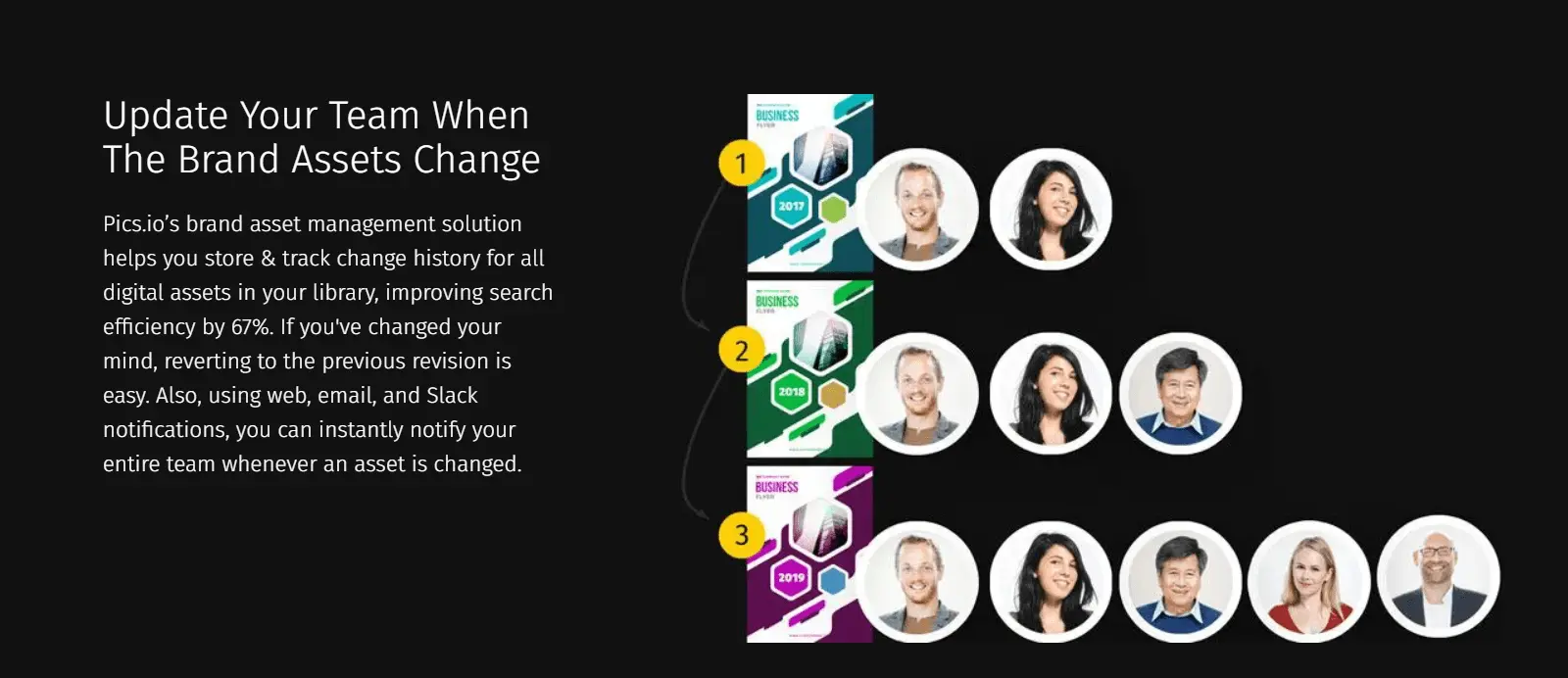
Therefore, end users (whether these are the marketing team, designers, or anybody else) can make informed decisions and your brand never display an outdated banner. For even better collaboration, you can also tag your teammates and ask questions or leave comments right in the system.
- Branded websites and inboxes for sharing branding materials: Our platform allows you to create secure websites to share assets or receive them directly via inboxes, ensuring optimal protection with password features. But it's not just about security; it's about brand integrity, too. You can choose from an array of design templates to tailor your portal's look, reinforcing your brand's identity.
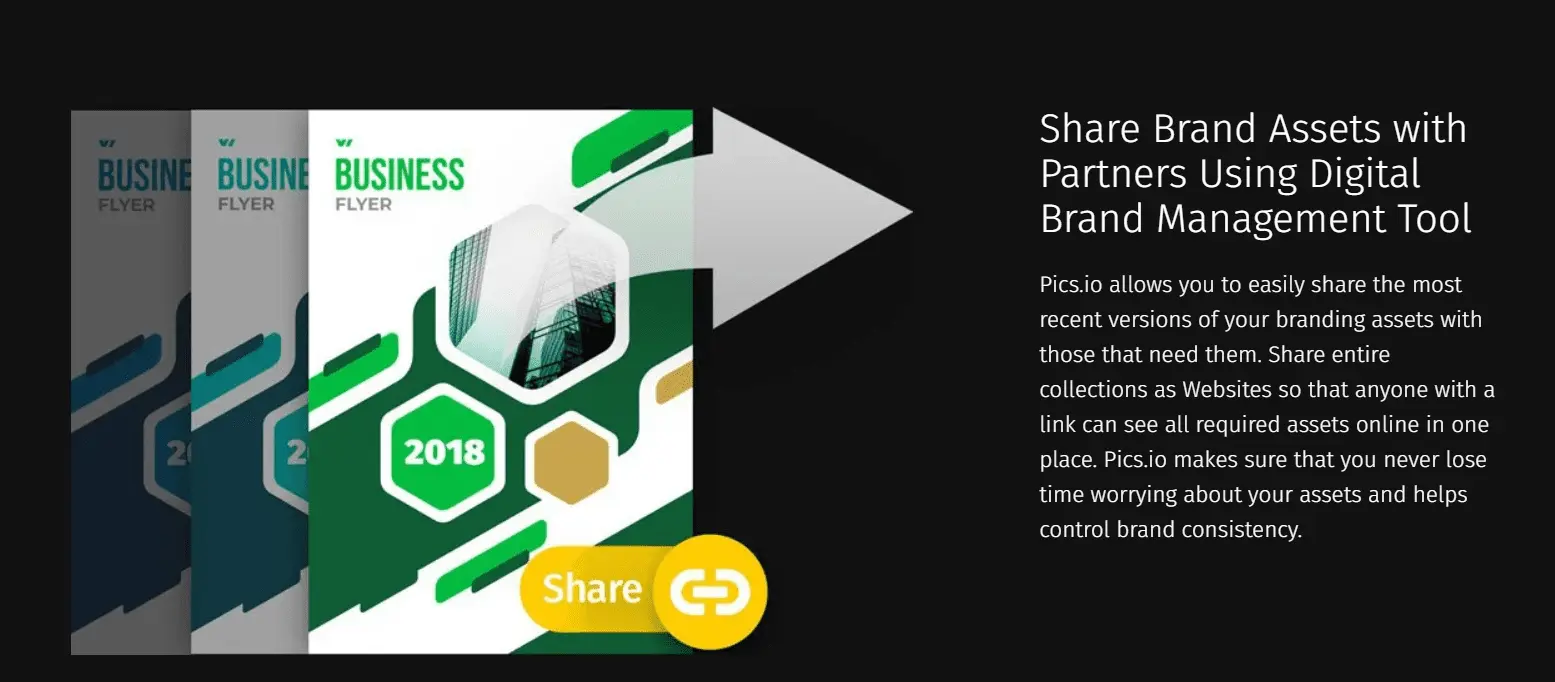
By offering such a branded experience, not only do you make file sharing simpler, but also ensure that external stakeholders instantly recognize and trust your brand every time they interact with your digital files.
- Branded DAM portal: With Pics.io, you can even customize your internal brand asset management software for it to match your brand guidelines. For instance, you can add your brand colors and logo as shown in the picture below.
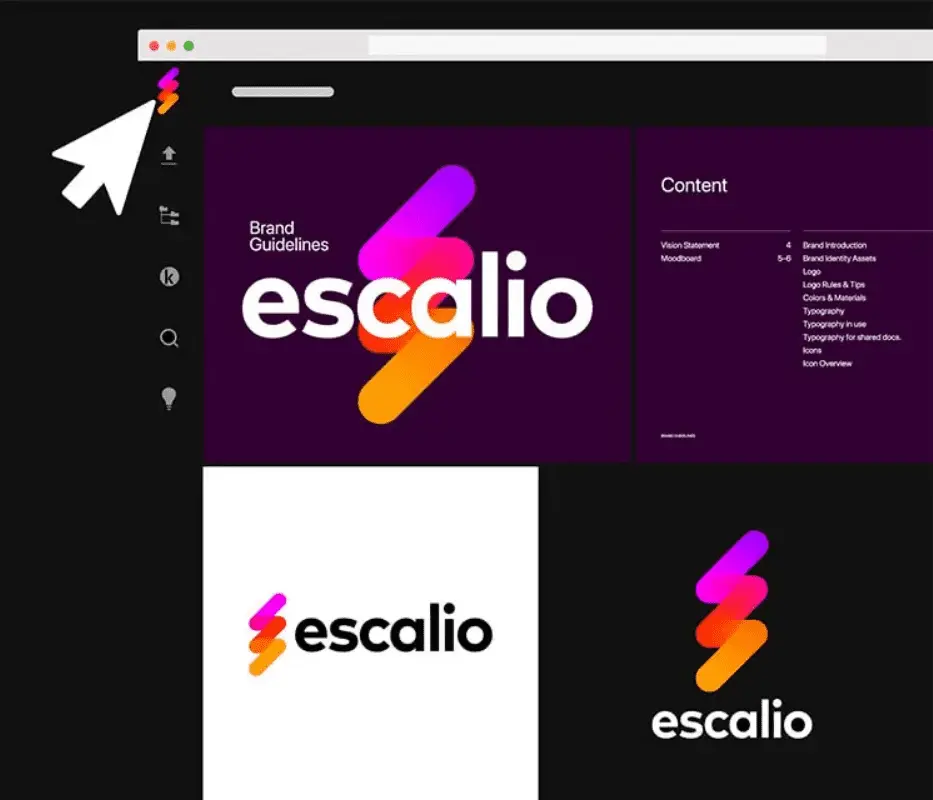
- AI keyword tagging for faster brand asset tagging and search: Tagging new assets is crucial for swift retrieval in the future. We do offer advanced metadata options for detailed categorization but our AI keyword tagging takes it a step further. This feature uses artificial intelligence to automatically analyze and assign relevant keywords to your assets. With AI, your vast library becomes smarter, more organized, and incredibly user-friendly, streamlining search and accessibility for all users.
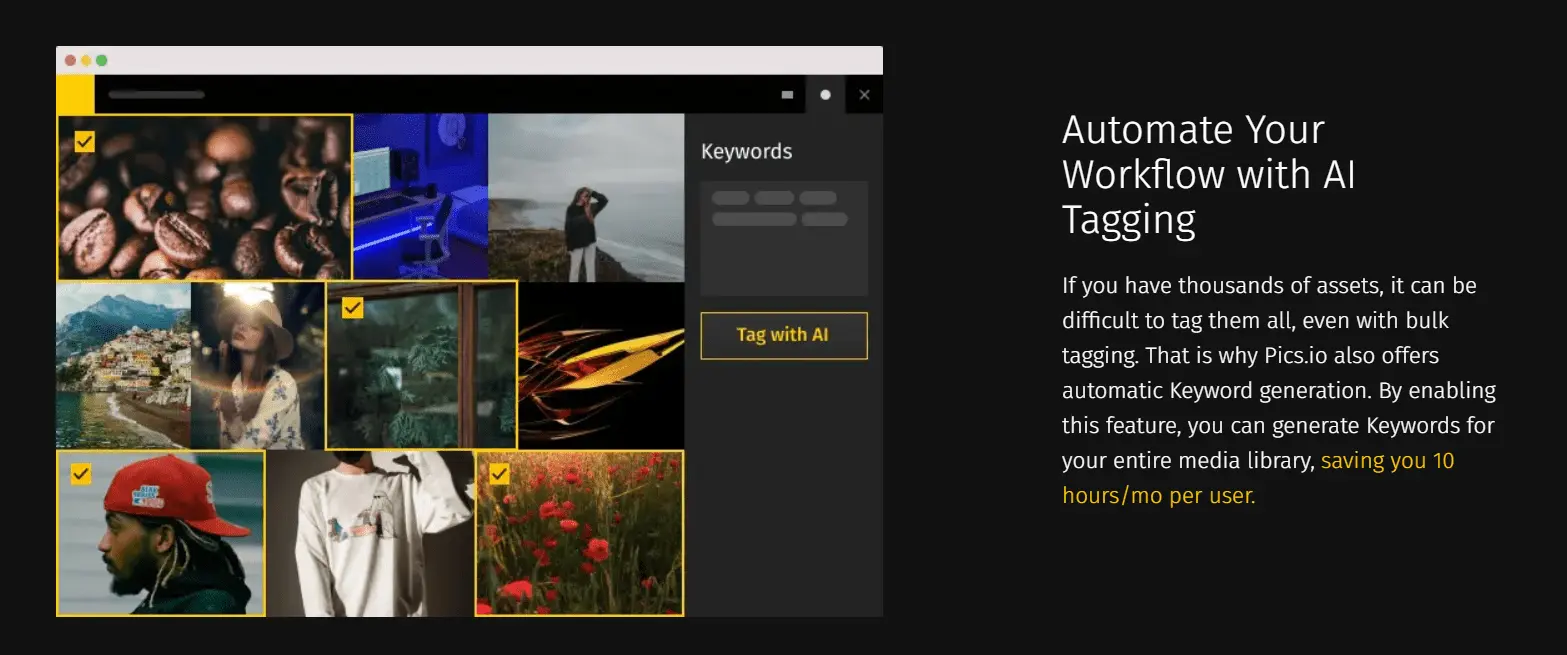
- Watermarking: Protecting your assets from unauthorized use or duplication is a real challenge, especially when it comes to brand uniqueness and identity. Watermarking offers a robust solution to this. With Pics.io, you can create and edit your own watermarks for your media. It not only establishes asset ownership but also ensures that the content, even when shared, remains unmistakably tied to its source.
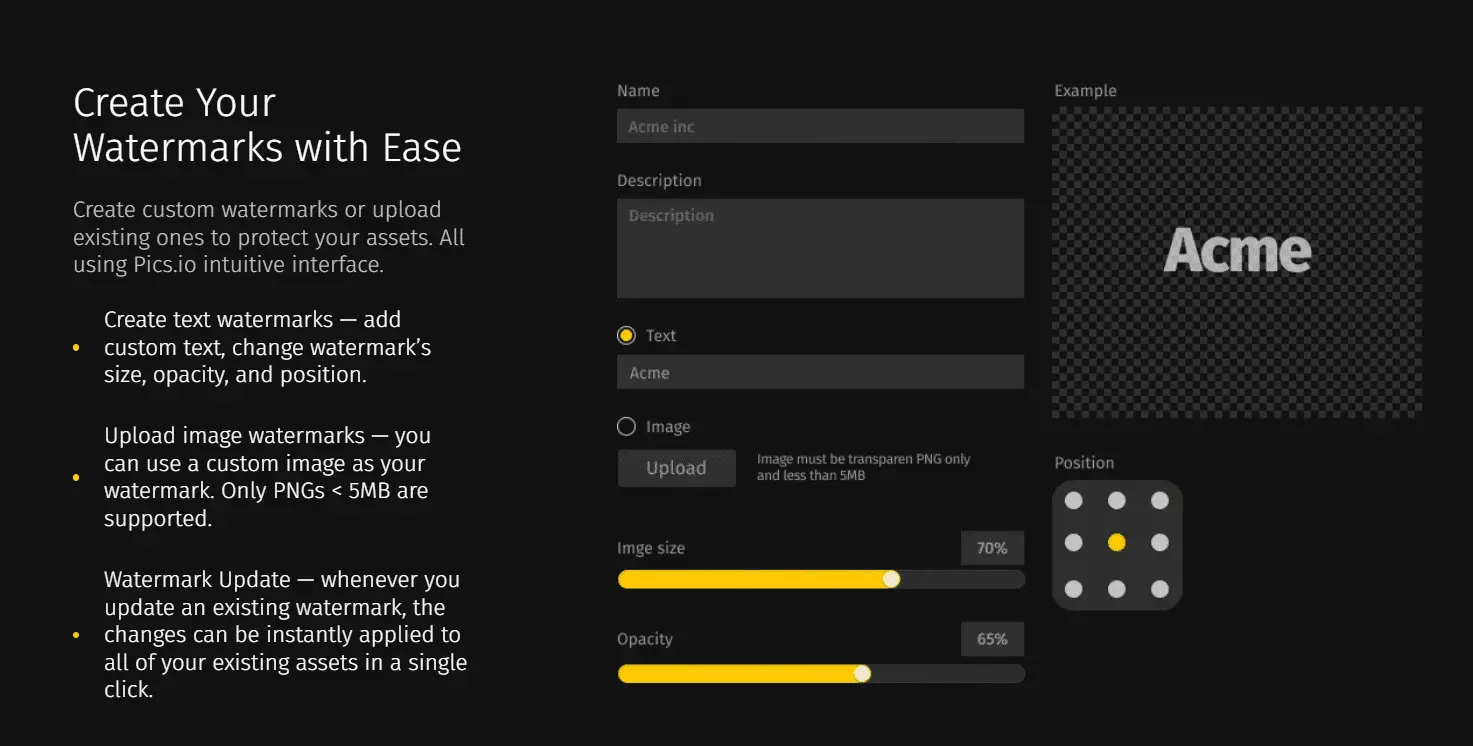
- User permissions: With differentiated access levels based on individual roles within the company, every team member has precisely the access they need—no more, no less. Whether it's marketing requiring full edit rights or sales needing view-only access, user permissions are customizable to fit the task. Teams can collaborate effectively without compromising security or integrity of company's digital files.
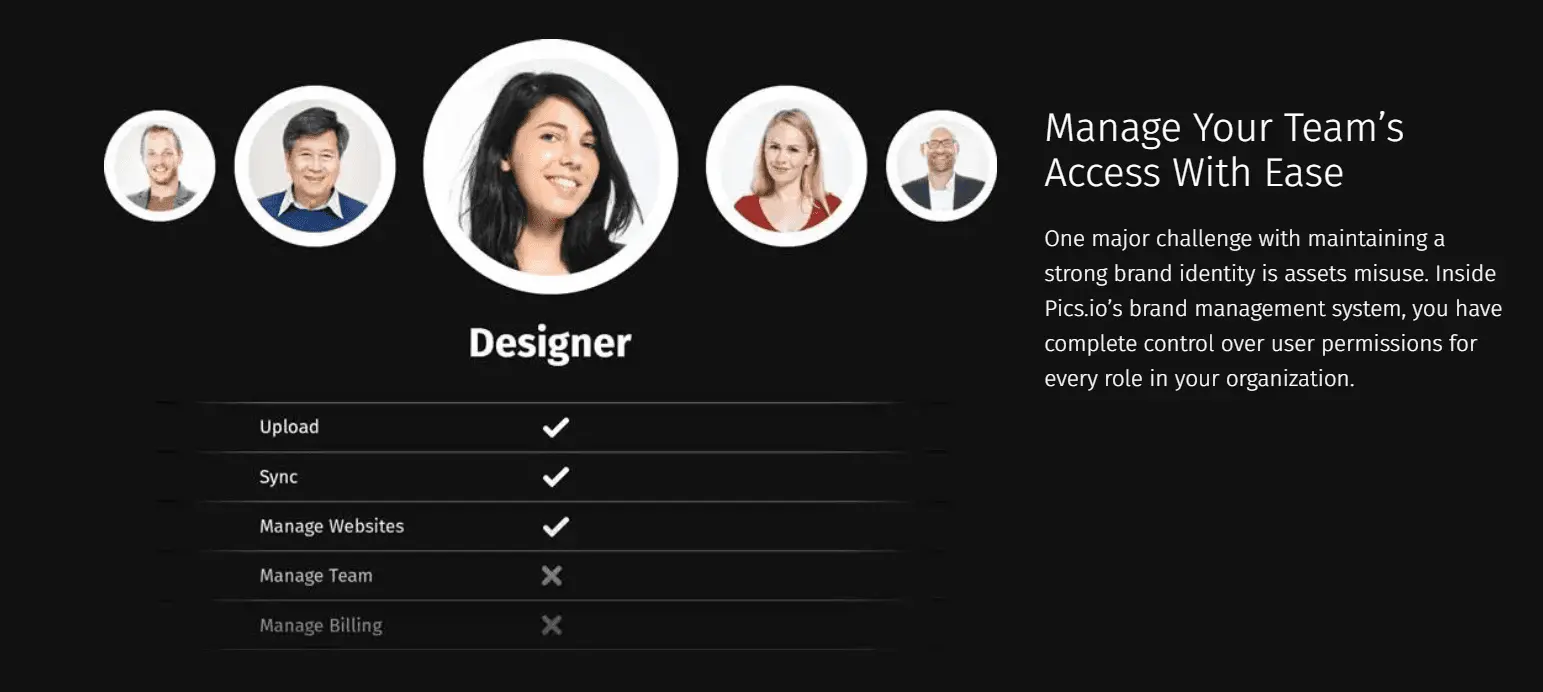
- Integrations: Our platform recognizes the diverse toolkit professionals rely on daily. That's why we offer seamless integrations with leading tools, from design-centric platforms like Figma and Canva to content management systems like WordPress for marketers.
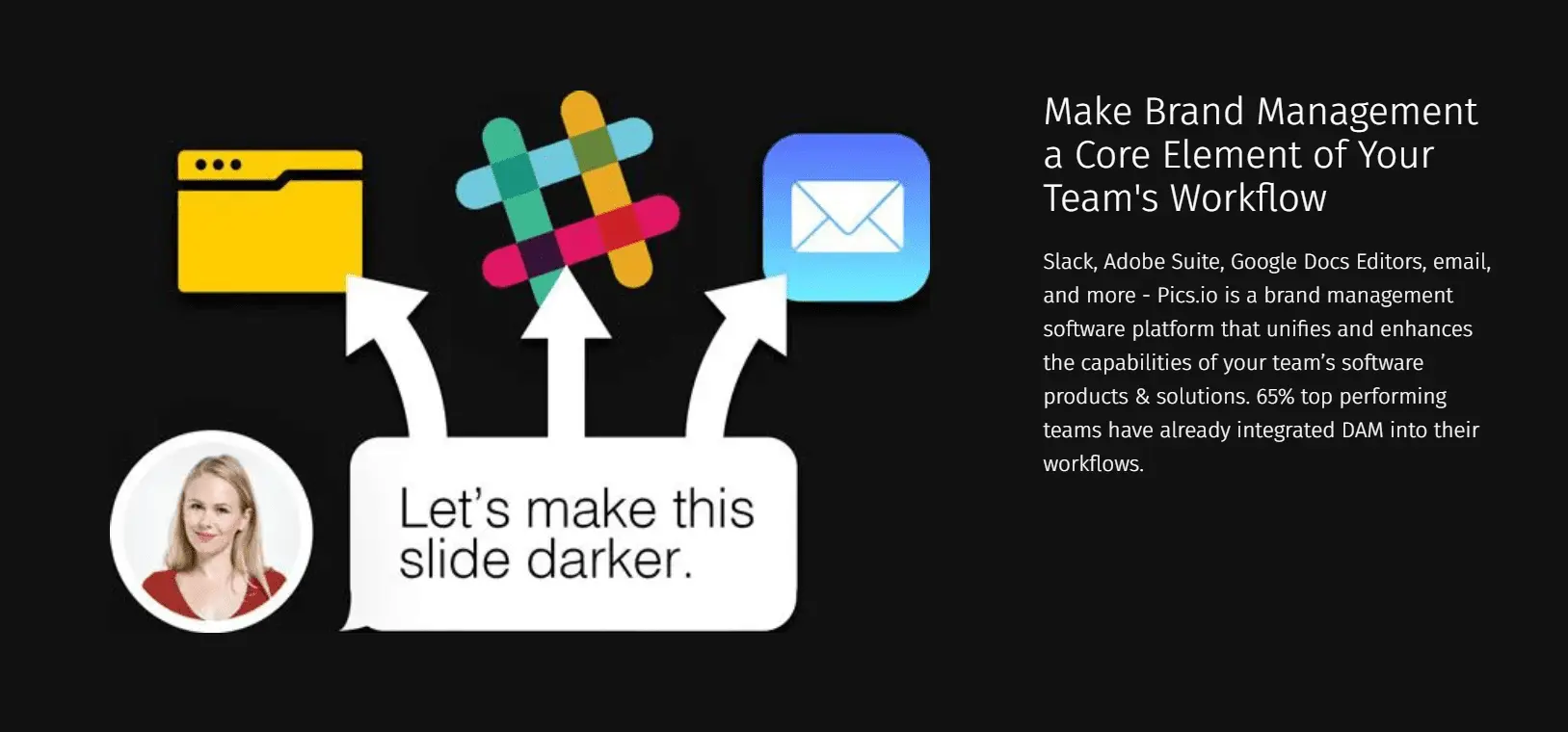
These integrations aren't just about connectivity; they're about enhancing efficiency. By bridging the gap between our platform and these essential tools, we ensure a smooth transition of assets and data.
Conclusion
Navigating the complexities of today's digital landscape requires tools that are both robust and adaptable. Brand asset management stands out as not just a necessity but the bedrock of ensuring a brand's consistency, relevance, and recognition across all platforms. From treating assets as unique digital DNA, to harnessing the power of AI for effortless organization, BAM encapsulates the future of brand management.
Did you enjoy this article? Give Pics.io a try — or book a demo with us, and we'll be happy to answer any of your questions.




